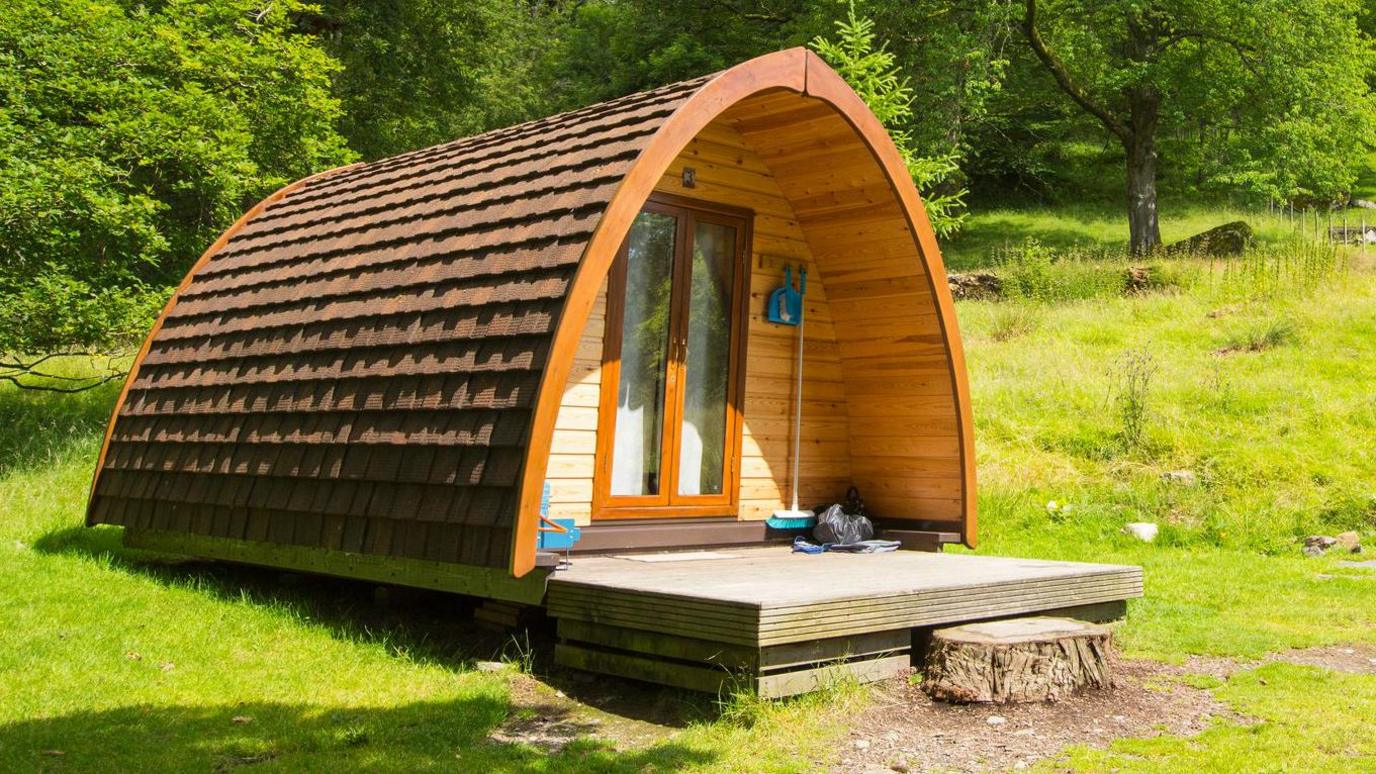Northern Ireland 'needs to build 100,000 homes by 2039'

- Published
Northern Ireland needs to build 100,000 private and social homes over the next 15 years, according to the communities minister.
The Housing Supply Strategy has been launched by the Department for Communities after being agreed by the Northern Ireland Executive.
It said 100,000 new homes needed to be built by 2039 and one third - about 33,000 - of those will be social homes.
However, the cross-cutting nature of the challenges facing the sector means buy-in is needed from a number of different Stormont departments.
Planning and connection to the water system lie with the Department for Infrastructure, building regulation is with the Department of Finance and energy is with the Department for the Economy.
There are nearly 48,000 households currently on a waiting list for a social home, about 36,000 of those are in housing stress.
The strategy aims to increase the supply of houses, improve the quality of existing housing stock and prevent homelessness.
Preventing homelessness will involve working with the Department of Health for young people leaving care, sick or older people being released from hospital and the Department of Justice for those leaving prison.
Smaller, accessible homes
Communities Minister Gordon Lyons said the scale of this challenge was "significant" and the current situation was "not sustainable".
Transforming housing supply will require a collective and committed response from the executive, he said, as well as "collaboration across government, the voluntary and community sector and private sectors".
Affordability of the private-rented sector is under pressure as construction and borrowing costs have risen significantly in the last few years.
An ageing population has changed the type and size of homes needed, with many needing smaller, accessible homes.
Decarbonisation will also have a huge impact on the type of homes needed in future, both in terms of building energy efficient homes and retrofitting existing stock.
The 39-page strategy said its aim was to create a housing system that could deliver on Northern Ireland's housing needs and demands, but was based on a number of assumptions.
Those assumptions included that the executive would:
Prioritise housing and match that priority with funding
Address investment in infrastructure, in particular wastewater infrastructure
Improve the planning system
Release public sector land
Maximise the availability of public and private finance
Analysis: What is new in this strategy?
In one way, today's strategy did not tell us anything we didn't already know.
It has been well flagged that we aren't building enough homes in Northern Ireland.
There are tens of thousands of people waiting for a social home, thousands of homes that cannot be built as they can't get connected to the water network and private rents have risen significantly in recent years.
The communities minister launched this strategy to address the housing crisis.
What is different about it is the cross-cutting nature of it being endorsed by the Northern Ireland Executive, which in theory should mean it is easier to address some of those well documented barriers to growth.
Government departments working together will be crucial in order to deliver it, as it will require overcoming problems with our water infrastructure, the planning system, land availability and funding.
Related topics
- Published25 November 2024

- Published24 October 2024

- Published22 July 2024

- Published3 December 2024
